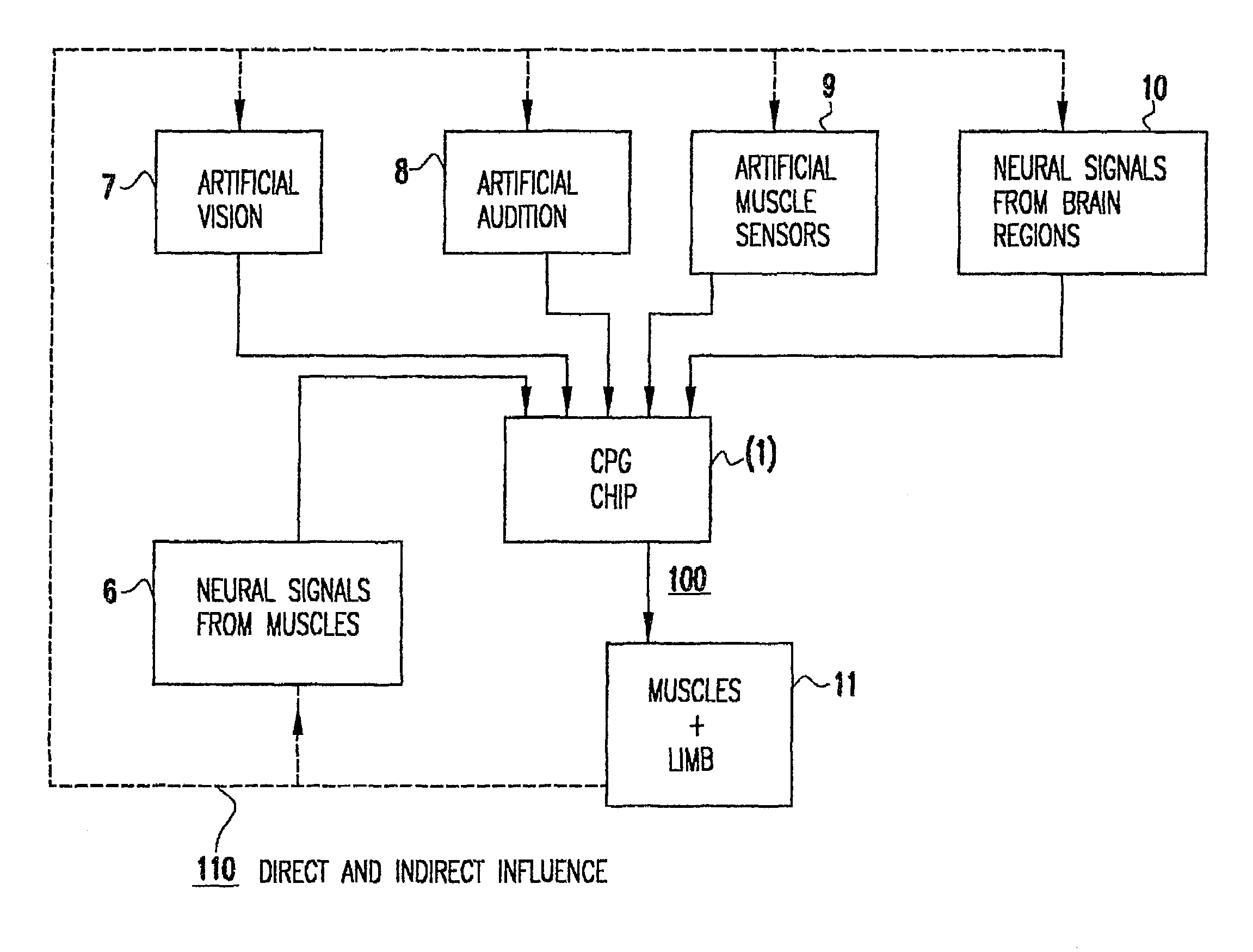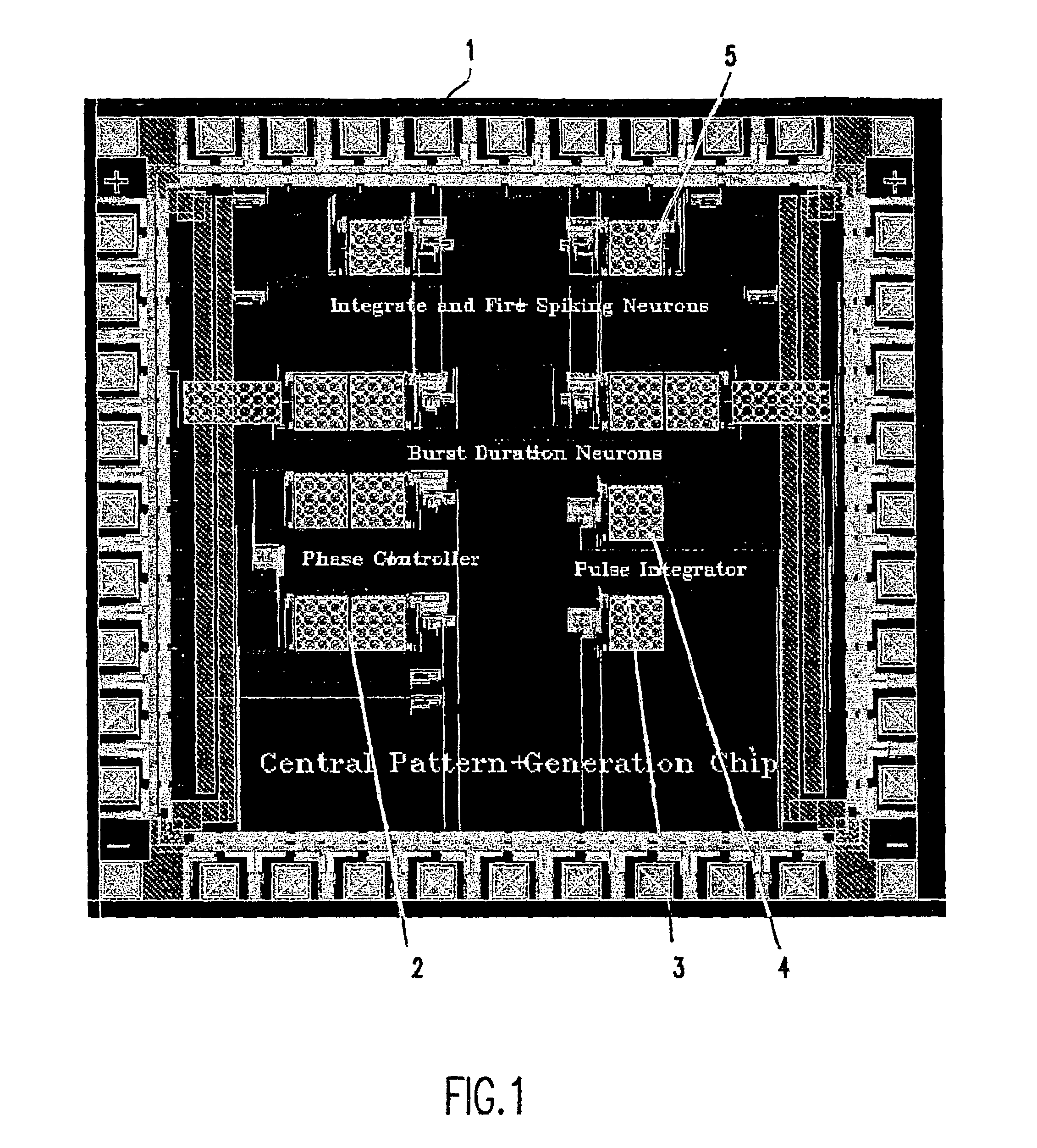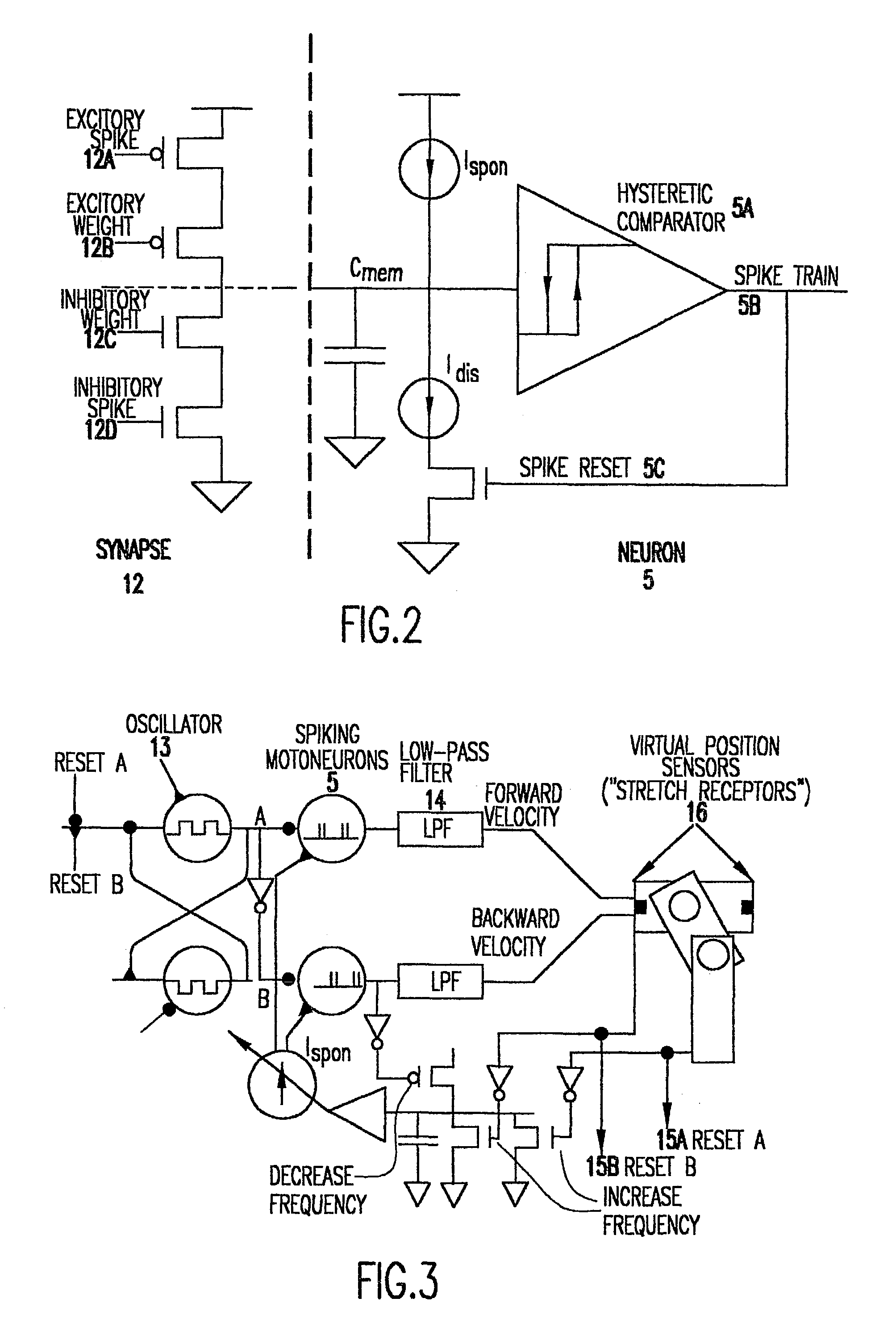Biomorphic rhythmic movement controller
a rhythmic movement controller and biomorphic technology, applied in the field of robotics and movement control, can solve the problems of not being able to respond to or adapt based on sensory input, their system is not a robotic system, and no motoneuron output stag
- Summary
- Abstract
- Description
- Claims
- Application Information
AI Technical Summary
Benefits of technology
Problems solved by technology
Method used
Image
Examples
example no.1
EXAMPLE NO. 1
[0086]A robot comprising a biomorphic leg was constructed using a neuromorphic chip on which CPGs were modeled as distributed systems of non-linear oscillators. To provide basic coordination in a leg, two neurons were phasically coupled together to achieve oscillations. They were coupled together to be alternatively active, with the alternating activity as the basic coordination that drove the hip of the robot. A phase control circuit governed the phase difference between the neurons. The oscillator neurons drove two integrate-and-fire spiking motoneurons, which drove an actuator. (The spiking neuron could also drive biological muscle or it could also be used to drive a pneumatic cylinder, a McKibben actuator or biomuscle directly).
[0087]The robot used servomotors to provide electrical power. To be compatible with this technology, low-pass filters 14 were applied to the spiking neurons and the resulting smooth graded velocity signal was integrated.
[0088]The circuit was ...
experiment 1
Running with a Passive Knee
[0117]With Example 1 in the above experimental setup, the CPG circuit was set to drive the actuator in the hip joint. The knee joint was passive and rotated with very little friction. The assembly was suspended above a rotating drum. The CPG circuit was started, and data was collected for three sensors, including foot pressure, knee and hip. “Stretch receptor” sensory feedback from the hip was used as feedback to the CPG.
[0118]Running with the passive knee included a notable result that in the system of Example 1 according to the present invention, the knee joint adapted the correct dynamics to enable running. As the upper limb swung forward, the lower limb rotated so that the foot came off the ground. When the upper limb was suddenly accelerated backward, the momentum in the lower limb forced the knee to lock in place. At just the correct moment, the foot contacted the ground and the subsequent loading kept the knee joint locked in place. As the foot trav...
experiment 2
Sensory Feedback Lesioning
[0120]Experiment 1 was repeated except for lesioning (turning off) sensor feedback periodically. Data was collected as in Experiment 1.
[0121]FIG. 5 shows the effect of lesioning sensory feedback on the position of the hip and knee joints as well as the tactile input to the foot. After lesioning the leg drifted backward significantly due to a bias built into the chip. When the sensory input was restored, the leg returned to a stable gait. When the feedback was lesioned (Time 11–19 seconds and 31–42 seconds), the hip drove backward significantly. As it did the foot began to lose contact with the surface and the knee stopped moving. When the lesion was reversed at 19 and 42 seconds, the regularity of the gait was restored.
[0122]FIGS. 6(A) and (B) show the effect of perturbations on gait with intact and lesioned sensory feedback. In FIG. 6(A), five sequential trajectories (numbered) in intact and lesioned conditions are represented as ranging between black and ...
PUM
 Login to View More
Login to View More Abstract
Description
Claims
Application Information
 Login to View More
Login to View More - R&D
- Intellectual Property
- Life Sciences
- Materials
- Tech Scout
- Unparalleled Data Quality
- Higher Quality Content
- 60% Fewer Hallucinations
Browse by: Latest US Patents, China's latest patents, Technical Efficacy Thesaurus, Application Domain, Technology Topic, Popular Technical Reports.
© 2025 PatSnap. All rights reserved.Legal|Privacy policy|Modern Slavery Act Transparency Statement|Sitemap|About US| Contact US: help@patsnap.com



